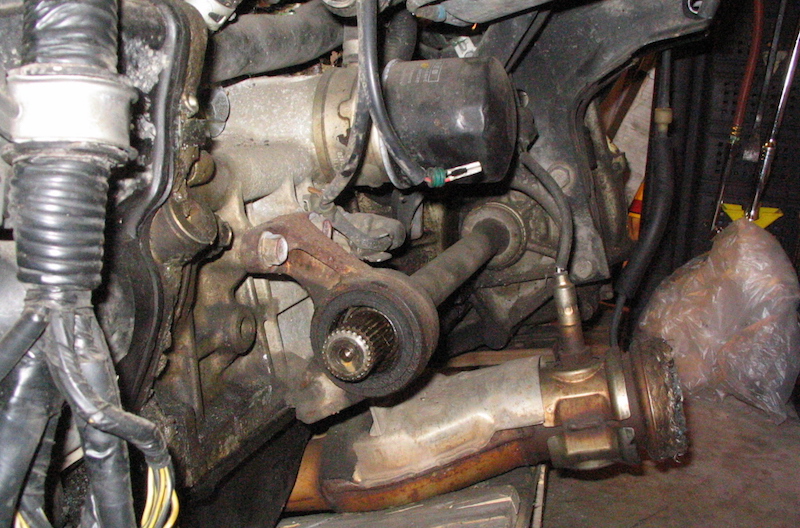So your check engine light is on. As you probably know, the check engine light (CEL) can light up for all sorts of reasons. But since the introduction of OBD-II back in the 1990s, many of those reasons are stored in a standardized set of diagnostic trouble codes that can be accessed with a generic code reader.
The good thing about the CEL and the entire OBD-II engine management and diagnostic system is that it takes a lot of the guesswork out of what's actually going on with a vehicle's engine and drivetrain. You or a tech can connect a code reader to the OBD-II port and quickly access any trouble codes that are stored in the engine computer, pointing towards the right direction for diagnosis and repair.
Note: Code scanning is one of the free services at your local Advance Auto Parts store.
Where it can get tricky, though, is interpreting what the trouble codes mean. At times, there's a certain amount of reading between the lines needed to come up with an informed conclusion on why a certain code might be stored—and a single problem might cause a cascade of trouble codes to all be stored.
To help you learn more about these codes and decide whether the issue is one you can tackle yourself or one that you should take to a trained technician, Advance Auto Parts will be breaking down common codes. In this article, we focus on trouble code P0131 and what it means.

P0131 O2 Sensor Low Voltage Bank 1 Sensor 1 — What It Means
The oxygen sensor (O2 sensor) is a key part of every car's emission controls. The O2 sensor is mounted in the exhaust stream where it reads the oxygen content of exhaust gases. Many vehicles have a sensor upstream, nearer the exhaust manifold, and another one down toward the catalytic converter. In this instance, Bank 1 Sensor 1 would mean the sensor closest to the manifold, on the driver's side cylinder bank of a V6 or V8 engine.
The signal from the O2 sensor is used to determine fuel metering and ignition timing. The sensor also has a heating element to bring it up to normal operating temperature more quickly, preventing the engine from running rich in open-loop mode until the engine is thoroughly warmed up. O2 sensors have a finite life cycle, usually around 70-100k miles. A coolant leak or contamination from a rich-running condition can shorten a O2 sensor's service life, although in an instance like this it usually is due to an O2 sensor that's just worn out.
A P0131 code means that the O2 sensor is sending an erroneous reading to the PCM, and the PCM's fuel metering calculations are thrown off as a result.
Symptoms
- Rough running
- Black smoke from exhaust
- Poor performance
- Poor fuel economy
- Hard starting (sometimes)
What Happens If I Ignore It?
If you put off an O2 sensor problem, it'll only get worse with time. Your vehicle will continue to run poorly and use too much fuel. You also won't be able to pass an emissions inspection if it's required in your state. Leave it too long and it's likely to cause other problems, including damage to the catalytic converter from a rich fuel mixture.
Possible Fixes
- Clear any codes in the PCM and test-drive the vehicle to see if the codes return. If possible, livestream the data from the PCM and monitor the voltage and resistance coming from the O2 sensor.
- Locate the O2 sensor (bank 1 of a V6 or V8 engine, in this case) and inspect its wiring harness for fraying, corrosion, shorts, damage or loose connection.
- Get your service manual and find the proper voltage range for the O2 sensor on your vehicle. Using a multimeter, check to see if voltages are in the appropriate range.
- If the code returns, wiring is good and the voltages are off, replace the O2 sensor.
The O2 sensor might be a little hard to get to, depending on your vehicle's make/model/year/engine. You may need a combination of extensions, universal joints and other adapters to be able to reach the sensor and deliver torque to it. A special O2 sensor socket can make the job go a little easier.
The sensor is subjected to thousands of heat/cool cycles in its lifespan, and is likely to be fairly seized-up in its mounting threads. Use a generous amount of penetrant and let it soak for awhile before you try wrenching on it. You may find it easier to attempt this when the engine is still warm.
NOTE: A code from the O2 sensor can also be caused by a faulty engine coolant temp sensor or even a misfire on a cylinder that leads to raw gas being dumped into the exhaust. Be mindful of any of these trouble codes accompanying the P0131 code. In the case of a misfire, you'll need to get that fixed ASAP — raw gas and a rich-running condition from a misfire can quickly destroy a catalytic converter, which is going to blow up your repair bill.
Have you come across this before? How easy was your sensor to change? Let us know in the comments.








